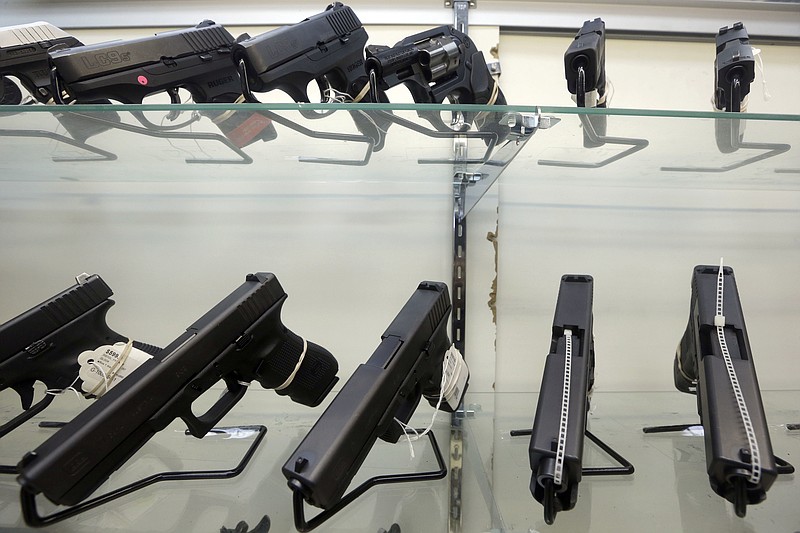After the school shooting in Texas claimed 10 lives, the incoming president of the National Rifle Association, Oliver North, blamed not guns but a "culture of violence" arising from violent movies and the like.
Meanwhile, Lt. Gov. Dan Patrick, R-Texas, was even more imaginative: He blamed too many school entrances and exits, and liberal abortion laws that he claimed had "devalued life."
Really? Folks, look at Japan. Japanese kids relish the same violent entertainment as Americans, and abortion is widely available. Yet at most nine Japanese were murdered with guns across the entire country in all of 2016 - fewer than the 10 killed just last month at the Texas high school.
One reason Americans in their late teens are 82 times more likely to be murdered with guns than their peers in other advanced nations is simply that we are awash with guns, some 300 million of them.
Yet Congress and President Donald Trump have been paralyzed in part because of the NRA refrain: There's nothing to be done! It's us, not the guns. It's hopeless!
In fact, there's plenty we can do. Here are modest steps consistent with the Second Amendment and public opinion:
1. Require universal background checks to see if a purchaser is a felon or a threat to others. The latest study finds that 22 percent of guns are obtained in the U.S. without a background check, and polls find that more than 90 percent of the public supports making these checks universal.
2. Improve background checks by allowing the federal government adequate time to perform them. At the moment, if authorities have not completed the check within three business days, the buyer can get the gun. More than 90 percent of checks are completed within minutes, but a small number require investigation. The shooter who killed nine people at an African-American church in Charleston, S.C., in 2015 should not have been able to purchase a weapon because of a drug history, but the background check was not finished in three days - so he was able to buy it.
3. Pass "red flag laws" that allow a judge to order the temporary removal of a gun from people who are a threat to themselves or others. The idea is that if friends hear someone threaten suicide or mumble about attacking a school, authorities can remove a gun. A hearing is later held with due process protections.
4. Get guns out of the hands of domestic abusers. Existing laws in this area are full of loopholes.
5. Require safe storage of guns, preferably in a safe or at least with a trigger lock. When guns aren't stored safely, it is easier for children to find them and play with them, for teenagers to use them for suicides, or for burglars to steal them. Some 300,000 guns are stolen each year in the United States.
6. Make serial numbers harder to file off, and require microstamping, so that cartridges can be traced back to the gun that fired the bullets.
7. Invest in "smart guns" that require a PIN, fingerprint or nearby bracelet to fire. Smart guns shouldn't be obligatory, but they should be an option. The way forward is probably for a police force to experiment with smart guns, giving them credibility with the public.
8. Support community anti-violence programs, like Cure Violence and Becoming a Man, that work with at-risk young people and show excellent success in reducing shootings.
9. Limit buyers in most cases to one or two gun purchases a month, to reduce gun trafficking.
10. Invest in gun buybacks. Since 1994, Americans have acquired an additional 100 million guns. The average gun-owning household now has eight firearms, and as owners die there should be a big push to acquire those guns.
Those are modest steps that should be acceptable to reasonable people across the political spectrum. State legislators have shown some initiative on guns - including Florida after the Parkland school shooting - and states that have taken action have reduced gun deaths. So let's take action rather than myopically whining about violent movies or proposing door control.
The New York Times
